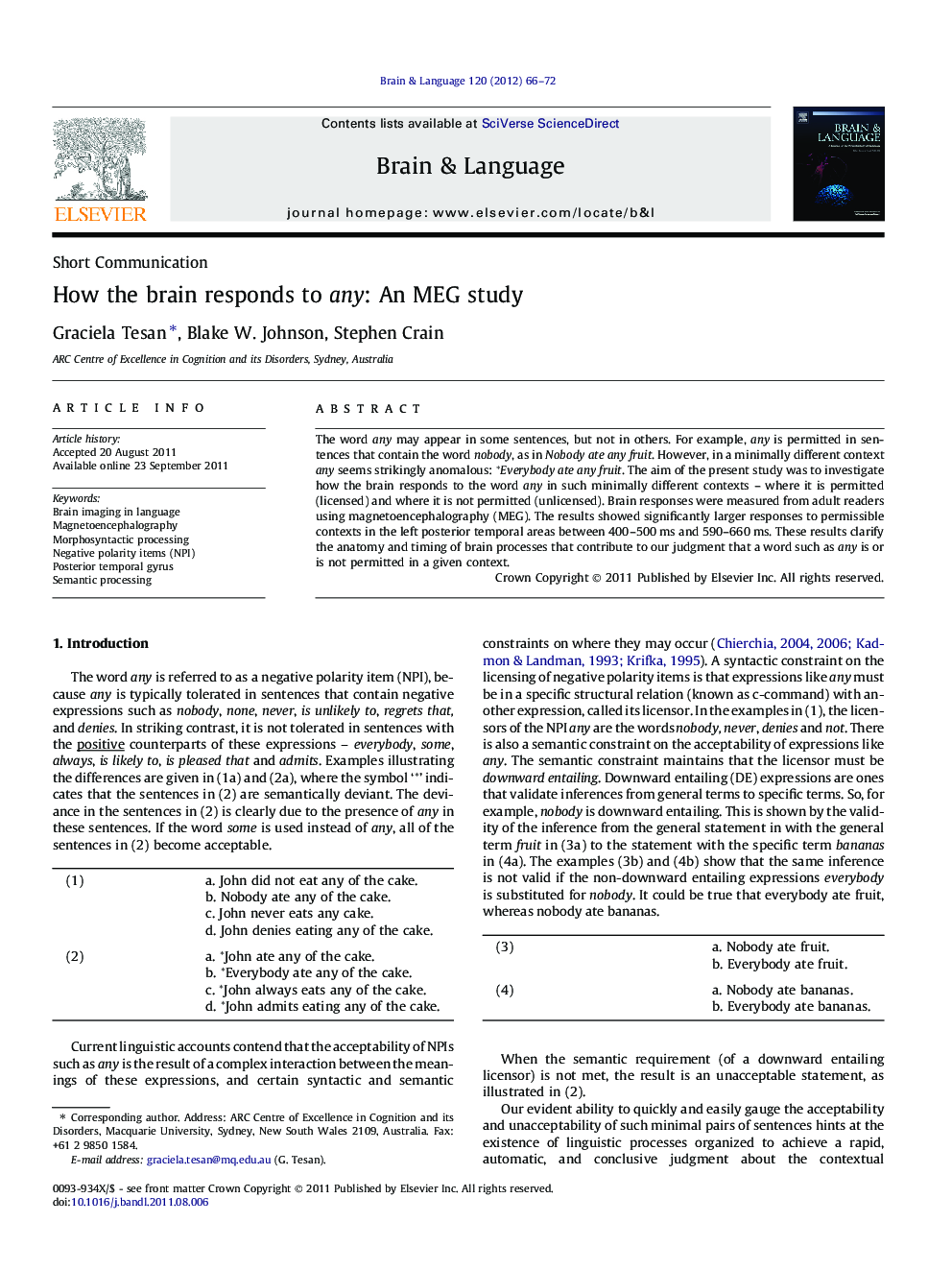| Article ID | Journal | Published Year | Pages | File Type |
|---|---|---|---|---|
| 925554 | Brain and Language | 2012 | 7 Pages |
The word any may appear in some sentences, but not in others. For example, any is permitted in sentences that contain the word nobody, as in Nobody ate any fruit. However, in a minimally different context any seems strikingly anomalous: *Everybody ate any fruit. The aim of the present study was to investigate how the brain responds to the word any in such minimally different contexts – where it is permitted (licensed) and where it is not permitted (unlicensed). Brain responses were measured from adult readers using magnetoencephalography (MEG). The results showed significantly larger responses to permissible contexts in the left posterior temporal areas between 400–500 ms and 590–660 ms. These results clarify the anatomy and timing of brain processes that contribute to our judgment that a word such as any is or is not permitted in a given context.
► We study unlicensed negative polarity items in the absence of directed attention to the grammaticality of the sentences. ► Differential responses peak around 400 ms and then 600 ms after onset. ► Unlicensed negative polarity items elicit larger responses in posterior superior temporal areas.
